Our visit to Mostar’s infamous Sniper Tower
The first time we visited Mostar we didn’t manage to get inside the Sniper Tower. That was the summer of 2014 and while standing outside the abandoned building pondering our options, we were hassled by a couple of drunk guys who wanted money from us to buy yet more booze. It was nowhere near the scale of grief we got when we were hassled and eventually robbed in Abkhazia four years later but it was enough to put us off and we gave up trying to gain entry that time around.
At the time, I just considered the two guys to be a nuisance. I had some knowledge of what happened in Mostar during the Bosnian War (April 1992-December 1995) back then but not as much as I know now and, on reflection, I should have been more respectful to these two men who both appeared to be in their mid-thirties and so would have only been twelve or thirteen years old during the conflict. I can only imagine what they had to endure and if alcohol was their way of blocking out the horrors of war then who am I to judge?
Former Ljubljanska Bank (Sniper Tower)
Unravelling the history behind the Sniper Tower
Along with the Siege of Dubrovnik (October 1991 – May 1992) and the Siege of Sarajevo (April 1992 -1996), the siege that took place in the southern Bosnian city of Mostar is probably one of the most-remembered blockades of the Yugoslav Wars.
A city predominantly divided into Bosnian Croats and Muslim Bosniaks, plus a smaller percentage of Bosnian Serbs, there were actually two sieges in Mostar; one in 1992 and then another more or less a year later. The first one took place between April and June of 1992. Prior to Bosnia declaring its independence from Yugoslavia in March of the same year, Bosnian Serbs had proclaimed parts of the territory to be Serb Autonomous Regions and this included Herzegovina, in which Mostar is the most prominent city. As tension escalated, Croat and Bosniak forces in Mostar, the Croatian Defence Council and the Army of the Republic of Bosnia and Herzegovina respectively, united to defend the city against the almost disbanded and Serb-dominated Yugoslav People’s Army and the newly formed Army of Republika Srpska, aka the Bosnian Serb Army.
The siege ended favourably for the Croats and Bosniaks, who were assisted by the Croatian Army (not to be confused with the Croatian Defence Council) and the success of a military offensive known as Operation Jackal (7 -26 June 1992). Mostar was heavily damaged during the siege, however, and three-quarters of the city’s residence (90,000 out of a population of 120,000) left during this time.
When many thousands of Mostar’s Bosniak population returned to the city soon after the 1992 blockage was over, they were accompanied by other Bosniak refugees from other regions of the newly formed country who had also been caught up in the conflict. This, along with other contributing factors, which included double-crossing and political power games, meant that, by the latter half of 1992, relations between the two former allies were in a dire state, and this culminated in the second Siege of Mostar which began in June 1993 and lasted until April 1994.
More deadly and devastating in many ways than the previous fighting, broadly-speaking, the Croats had control of the west of the city, while the Bosniaks were situated in the east. To begin with, there was fierce battling and regular attacks from both sides but as time progressed, the fighting settled down and turned into more of a siege-like conflict, with the more superior Croat forces having the upper hand and ultimately blockading the eastern, Bosniak held, side of the city.
In any drawn-out, long-lasting campaign in urban areas, sniping is an important part of military tactics. Just a handful of strategically placed snipers can cause havoc during a siege and put the fear of God into those who are potentially in the firing line. This is especially true for civilians who are deprived of food and other basic necessities. They often have no option but to enter into a danger zone and risk their lives in order to simply survive and this, sadly, was the case for many of those trapped in the eastern part of Mostar.
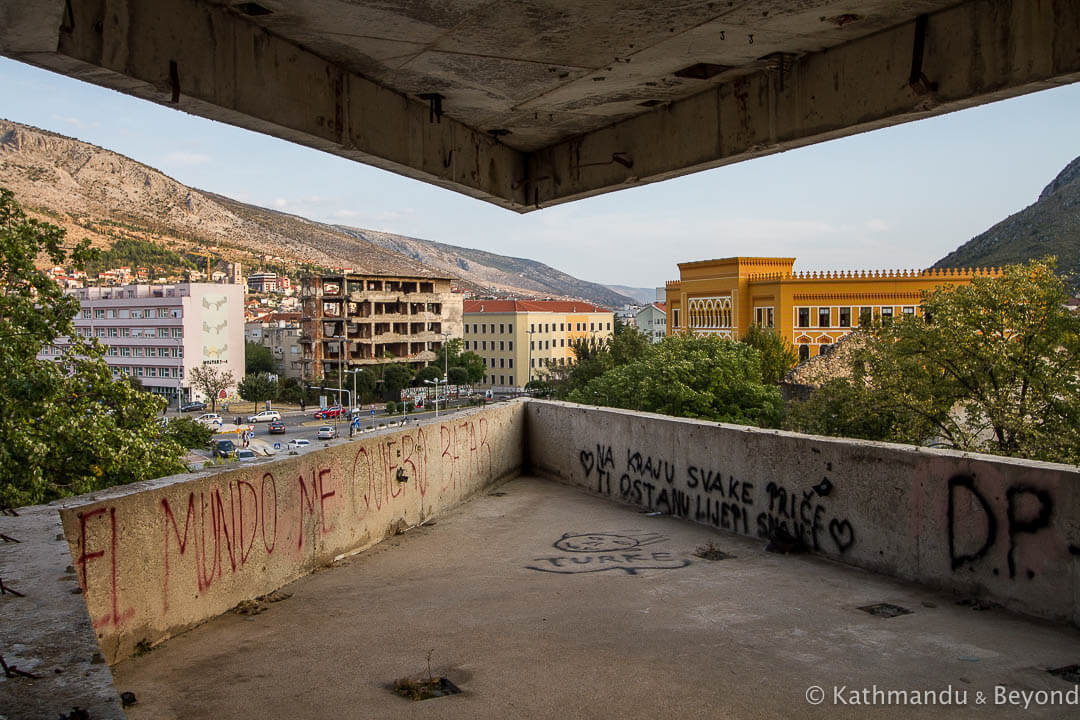
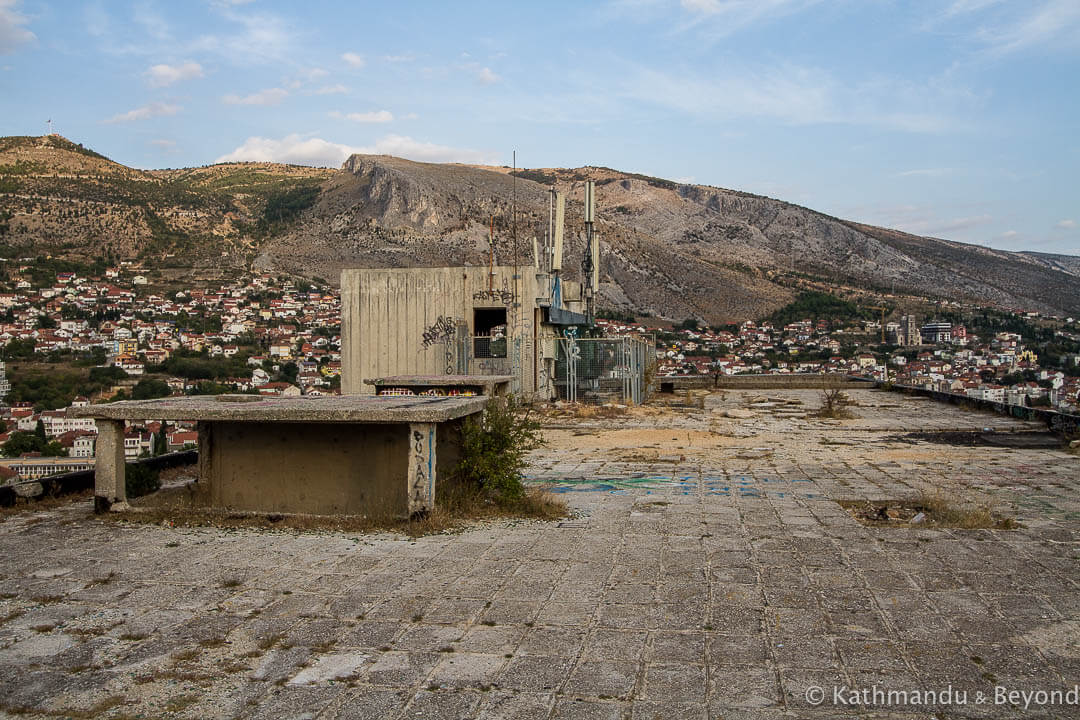
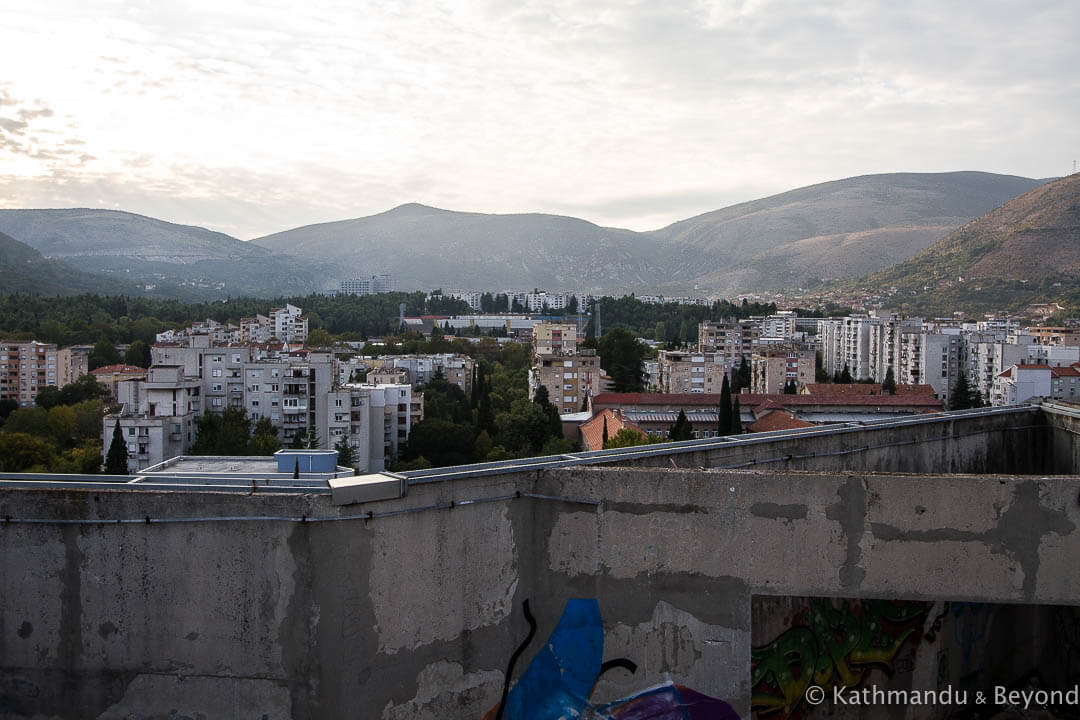
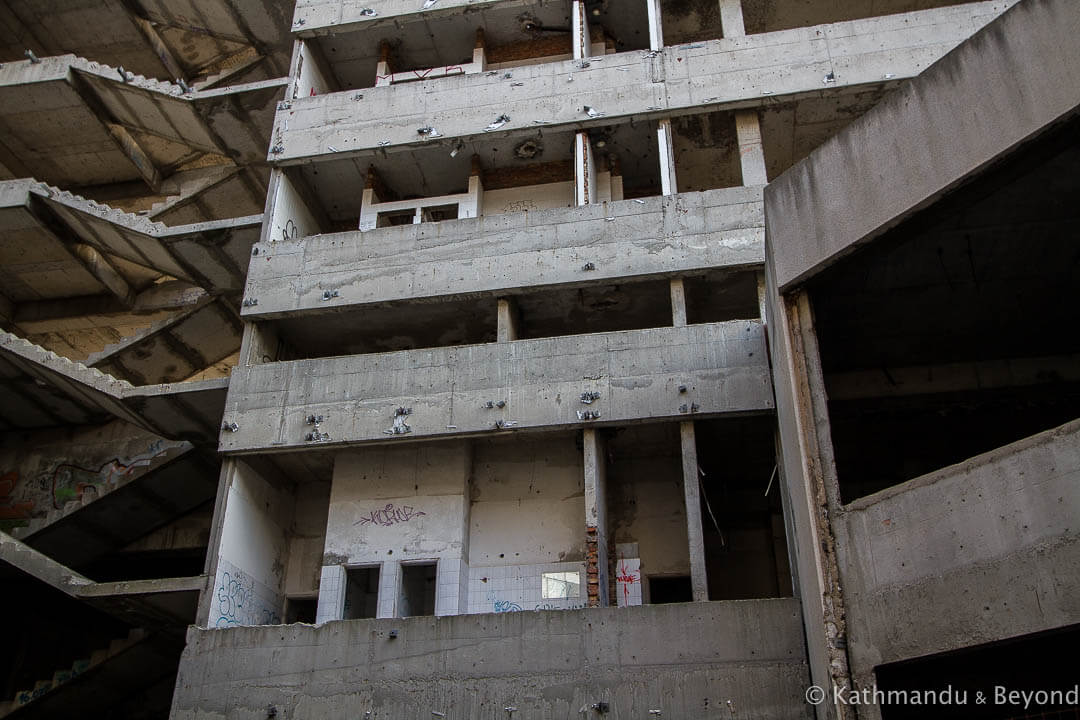
I’ve often thought what hell it must’ve been to run the gauntlet in an area that is a known target area for these deadly marksmen. I’ve also wondered about the snipers themselves and whether they are totally ruthless human beings who enjoy killing in cold blood or whether they are normal guys who are simply obeying orders and despise the job they have been given purely because they are an excellent shot with a gun. I’ve never met, and am unlikely to ever meet one so I guess I’ll never know.
The former Ljubljanska Bank, to give the Sniper Tower in Mostar its official name, was the tallest building in the city at the time of the war and it was positioned in Croat held territory. Just 300 metres from the Neretva River and with an uninterrupted view across to the eastern side of the city, the war-torn bank was an excellent vantage point for the Croat marksmen.
The terror that those living in Mostar must have endured during this period in the city’s history is unimaginable to me and there isn’t really much more I can say. Eventually, the conflict came to an end (part of the Washington Agreement, a ceasefire accordance that came into effect on 18th March 1994) but there were plenty of atrocities and accusations on both sides, including human rights violations, the use of unofficial detention camps and sexual assault. Much of Mostar’s infrastructure was razed to the ground and the city was left in a desolate state. It was during this conflict, for example, that the Ottoman-period Stari Most (Mostar Bridge) in the Old City, which was under the control of the Bosniaks, was famously destroyed by Croat forces after a shelling campaign culminated in the bridge crumbling into the Neretva River in the early part of November 1993.
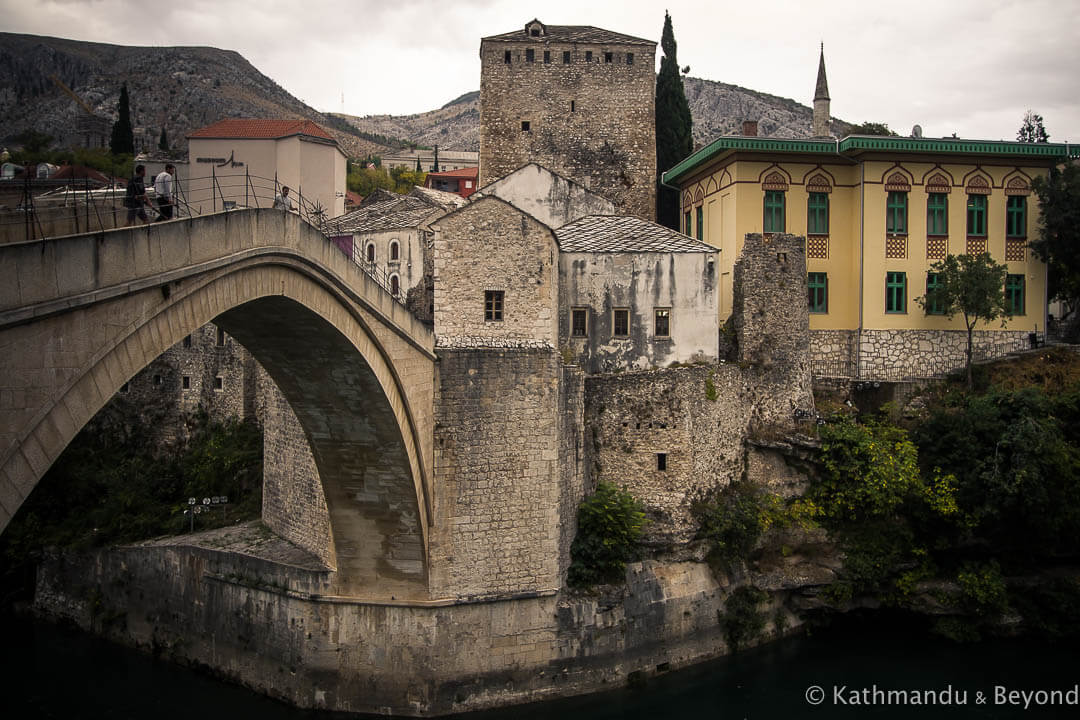
The Sniper Tower today
Today, the city is faring much better. As I’m sure many are aware, the now world-famous bridge has been meticulously restored to its former glory and in 2005, was awarded UNESCO World Heritage status under the official title of Old Bridge Area of the Old City of Mostar.
This, in turn, has brought back the tourists. These days, Mostar is one of the most popular places for visitors in the entire Balkans and tourists arrive in their droves to photograph the bridge and explore the rest of the Ottoman-era Old City.
This is a good thing as Mostar needs this to aid its recovery but most of the city’s visitors don’t venture much further than this relatively compact area and in many other parts of the city there are still (very) visible scars of a war that ended twenty-five years ago.
Because of its unusual design and height, the Sniper Tower is the most striking structural casualty of the war but there are numerous other examples. Take the Razvitak Shopping Centre, for example, which has such a wretched interior that we stopped short of going inside for a look around even though it was very easy to access. Then there are the buildings, some in use, some not, that are still riddled with bullet holes and shell marks. In fact, you only need to venture a short distance from the Old City and you will soon notice evidence of this without having to look too hard.
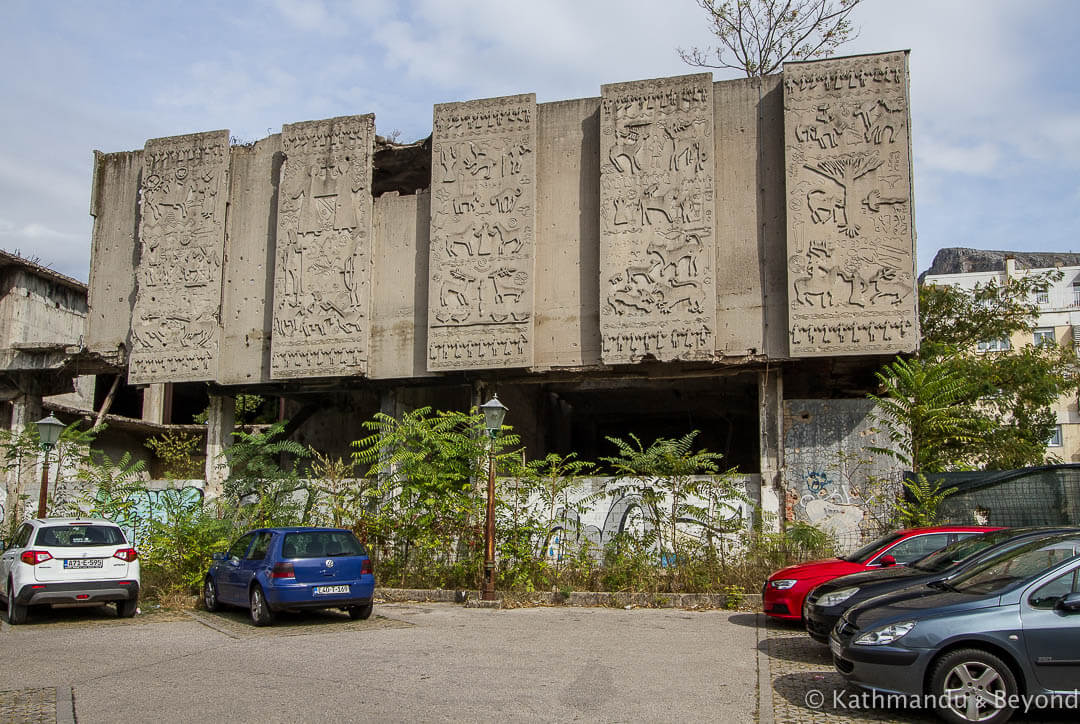
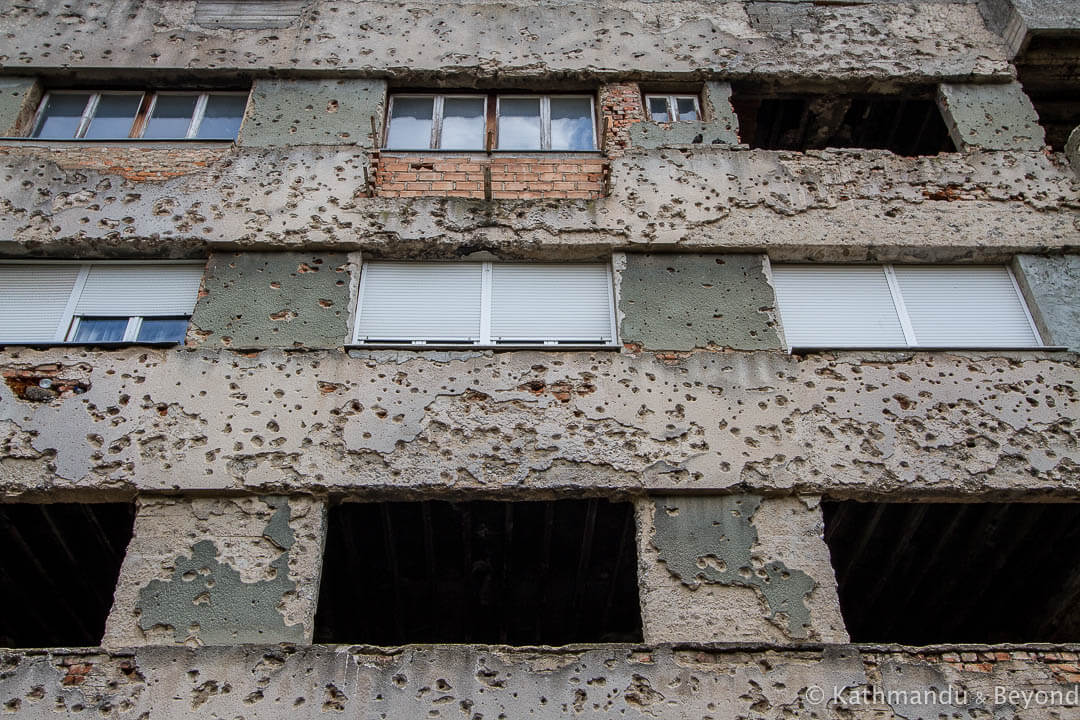
Some of these war-torn buildings have been left as purposeful reminders of the war, a kind of memorial if you will. I’m fact, I’m pretty sure this is the case with the Sniper Tower. If you search for the Sniper Tower on the Internet, most articles describe it as being squalid inside: dank and horrible and full of crap, but this no longer the case. Somebody, presumably the authorities, have gone in and given it a damn good clean. As the saying goes, you still wouldn’t eat your dinner off the floor but each of the building’s levels was devoid of any sort of debris or sprouting foliage when we visited in October 2018, and from an abandoned building perspective it was probably one of the cleanest ones we’ve been inside. I asked the owner of our mini-apartment who, incidentally had no hesitation in talking to us about the war, even though he still had strong memories of his own bad experiences, when the building was cleaned out but he couldn’t tell me as he hadn’t been inside it for as long as he could remember.
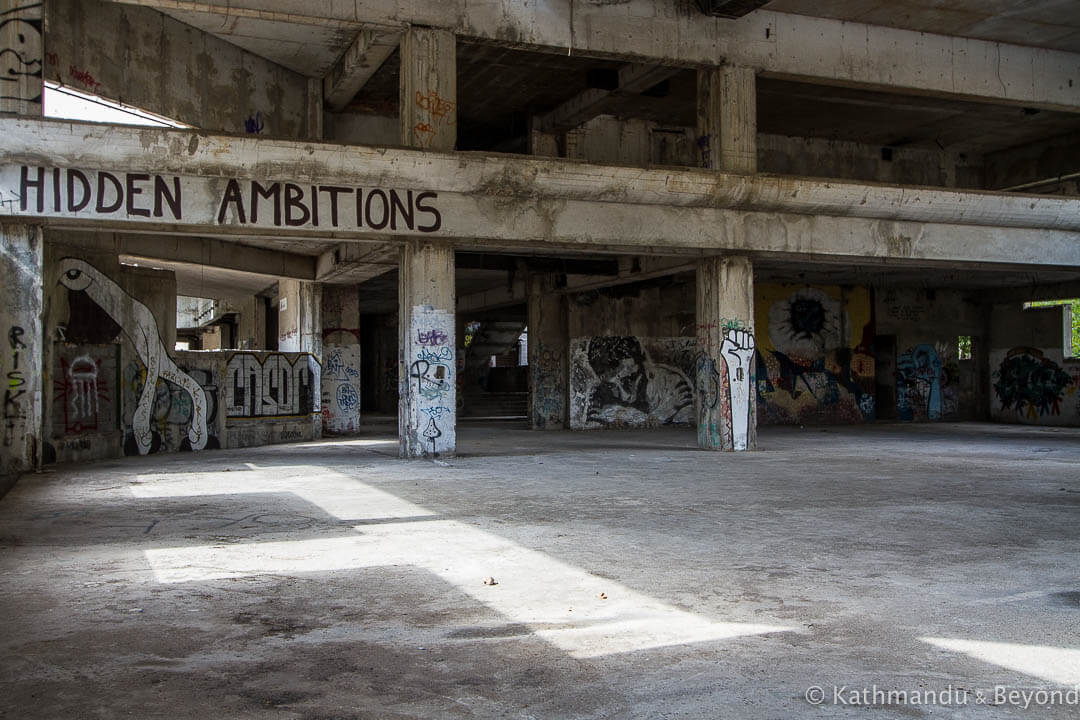
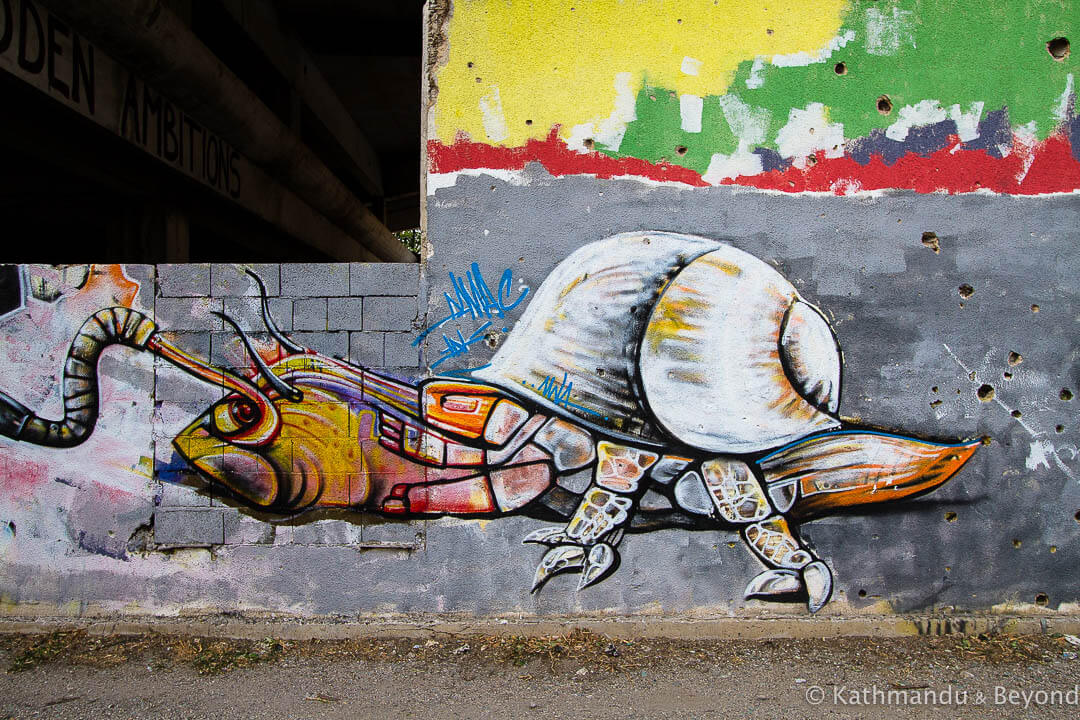
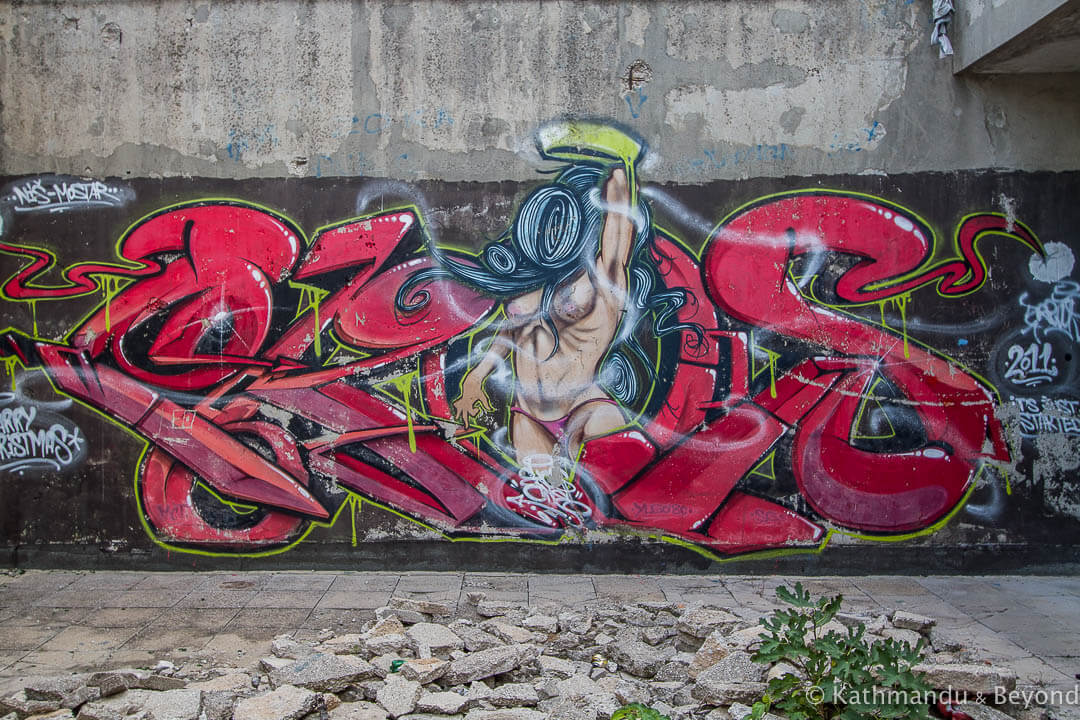
The street art that adorns most of the exterior of the premises and quite a few of the walls in the interior as well, wasn’t removed in the cleanup operation. This, combined with the fact that nobody really knows what to do with the building (there is zero information online about its fate and nobody we spoke to locally could give any us any indication about any future plans for it) makes me assume that, for the time being anyway, the Sniper Tower has intentionally been left in situ as a saddening reminder of the Siege of Mostar.
READ MORE BLOG POSTS FEATURING THE BALKANS
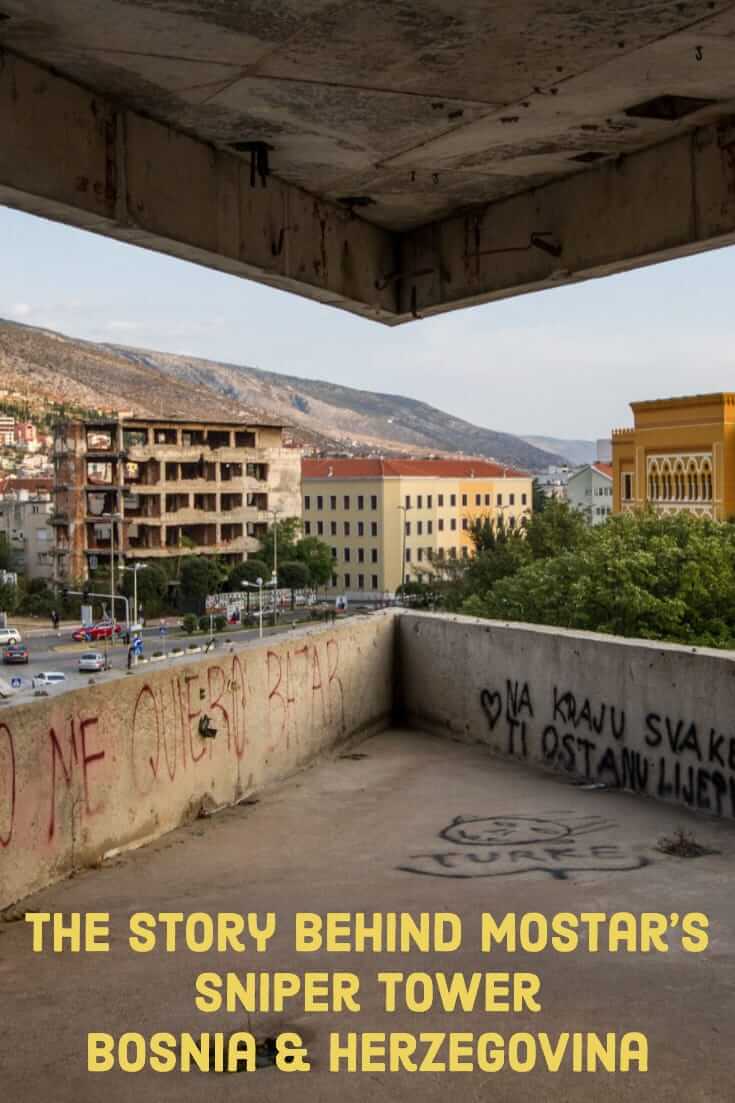
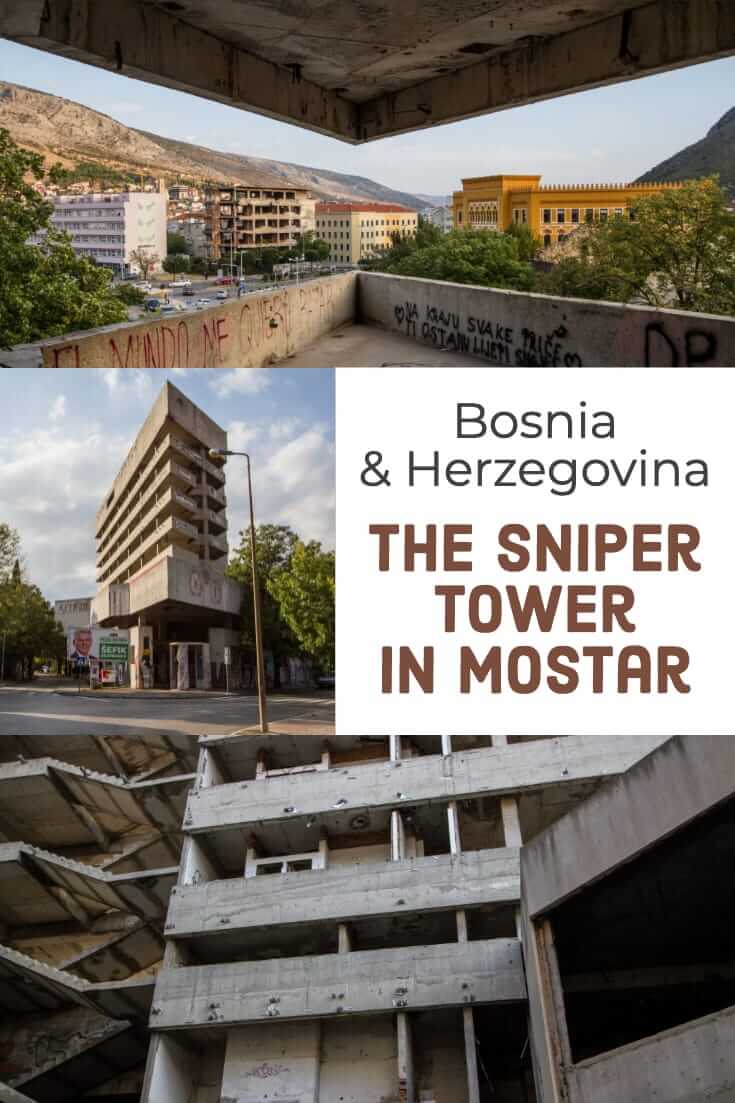
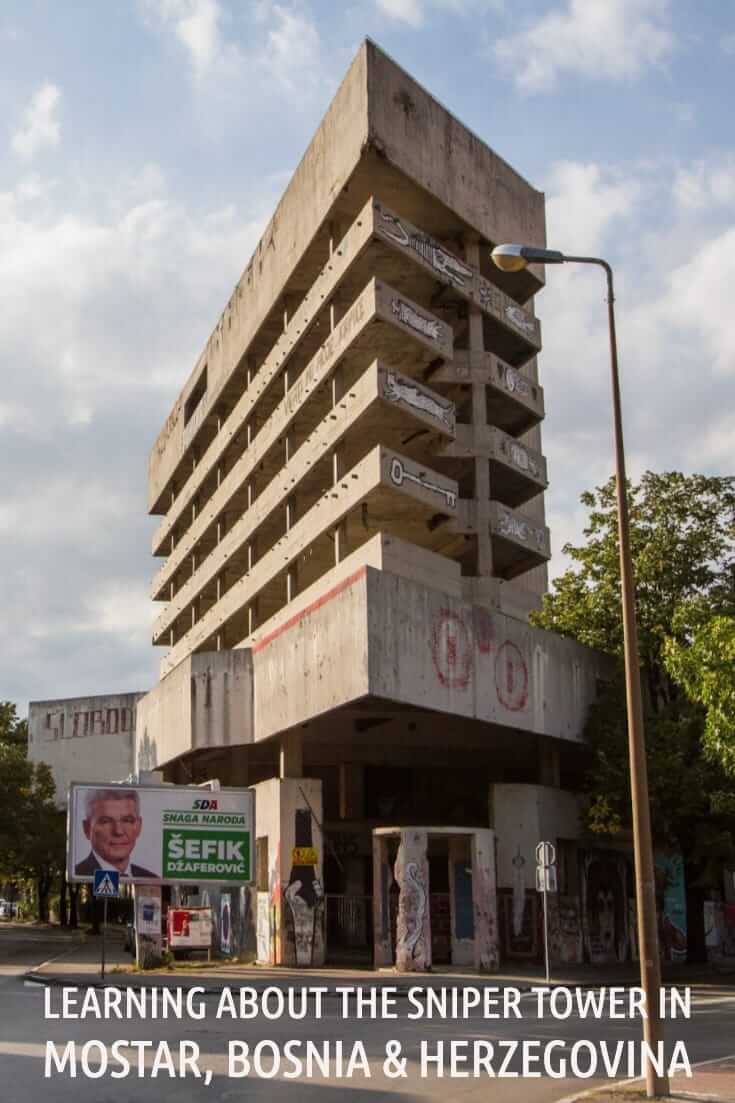

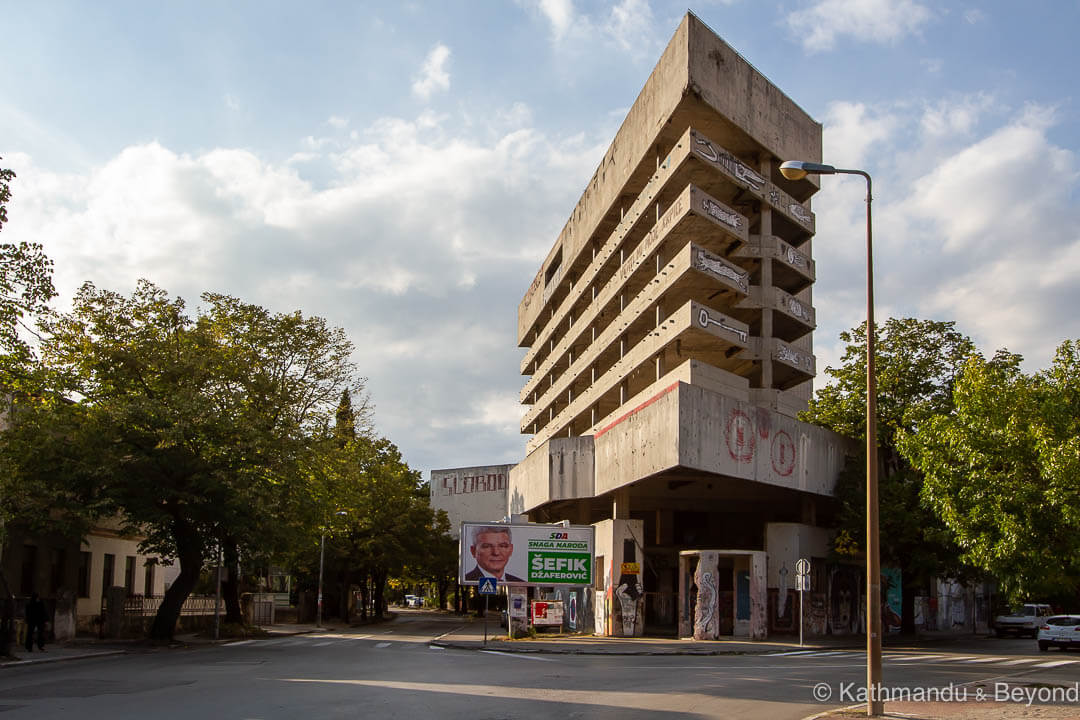
I love your blog! I only read 2 travel bloggers and you are one of them.
Thank you! Flattery will get you everywhere! 😉 Out of interest, who is the other one?
Mostar is so completely different than Croatia that it’s hard to imagine that it too was part of the former Yugoslavia, We visited back in 2015 and I can see not much has changed since then. I was actually creeped out by the Sniper building.that dominates that square. I can read and understand the history but I can’t even begin to image what the people had to live through.
I remember taking photos during our visit when a woman came up to me and told me that at one time the city was beautiful and vibrant and what is left are alot of scars. She was sweet and I can see she was happy that inspite of it, I was visiting her city. But her disappointment and sadness was palatable. It made me realize that it’s a place that is still trying to heal and I think it might take a few generations before that happens. I have always loved your photos and they brought back all the emotions I felt during our first visit. Thank you for sharing the detail history and post!
Glad you enjoyed the post, Lissette. Even though the war was fairly close to home for me, it somehow felt a million miles away. As you say, it’s really hard to comprehend what the people when through at the time, and when I think of me at the time – a carefree early twenty-something – and how my life compared with others of a similar age…. Yeah, it’s impossible to imagine.
very interesting, and loving your blog.
I went to Mostar and I rented a room from someone there who was egaged in the Bosnian resistance movement during those times in Mostar. He didn’t tell me so much (I wouldn’t push him, of course) but he did tell me something very chilling about this building, and the streets below. We were having a beer together on my last night in Mostar. He was really a busy guy and I had to twist his arm to come out for a couple of beers. So we are chatting outside a bar on this street, talking a little about the wars, and he says “they used to have a human safari on this street”. I was kinda shocked and didn’t know what he meant. He went on to explain, that many civilians were sniped on this particular street and that also in his opinion, things had gotten so savage that far right militants were renting out sniper spots on this building, and charging dollar a bullet, for anyone who was in the mind to take pot shots at Bosnians. I have no reason to doubt this man’s words.It’s a discussion I will never forget.
Hi Jock, firstly, thank you for the compliment about our blog – it is appreciated. Your story is a chilling one and I also no reason to doubt its authenticity. Events in Mostar during that time were horrendous to put it mildly and simply researching online etc. doesn’t unravel the true extend of what really went on. Firsthand accounts, therefore, help put things into perspective. Thanks again for taking the time to write your comment.
Great work! Have you been to the Partizan´s cemetery? It is worth an article!
Thank you for the compliment, and are you referring to the Partisan cemetery in Mostar? If so, yes we have visited that also but haven’t got around to writing about it yet but hope to eventually.